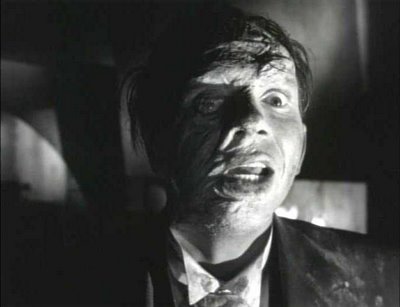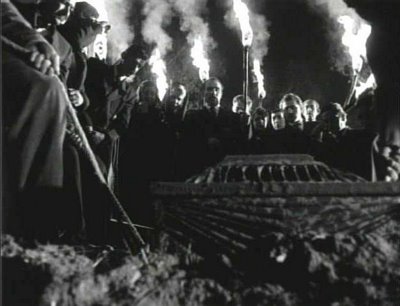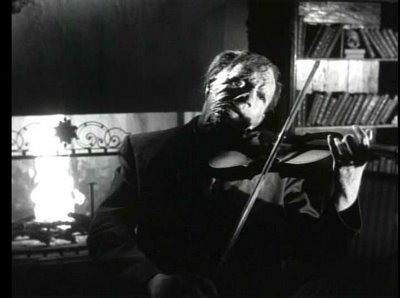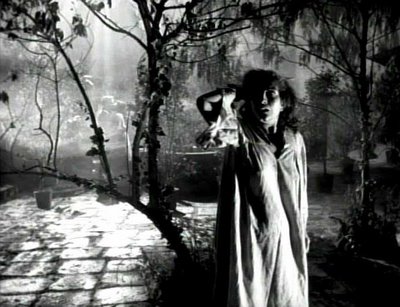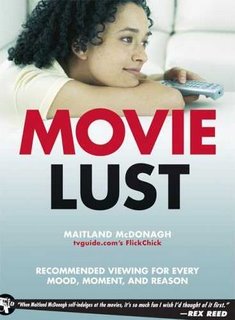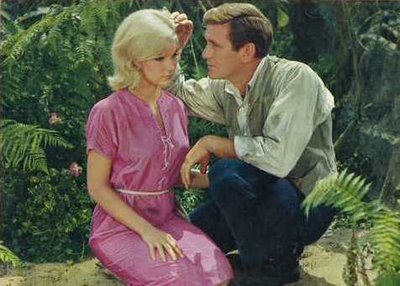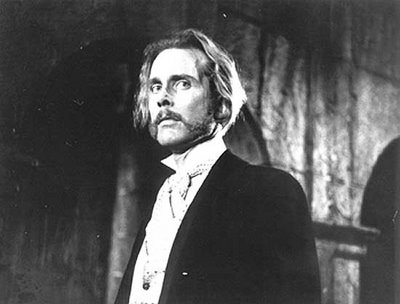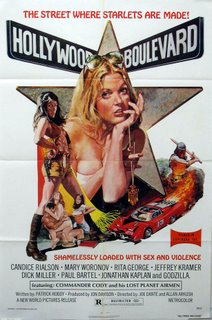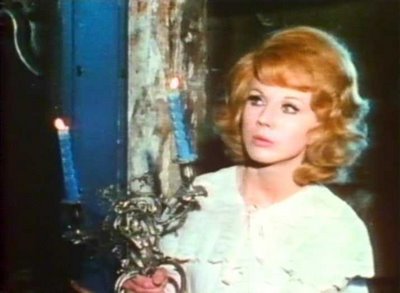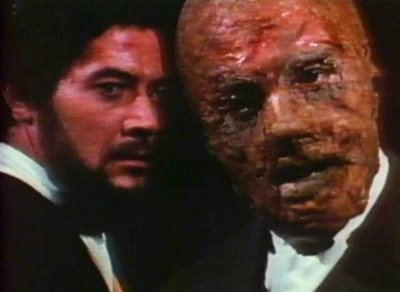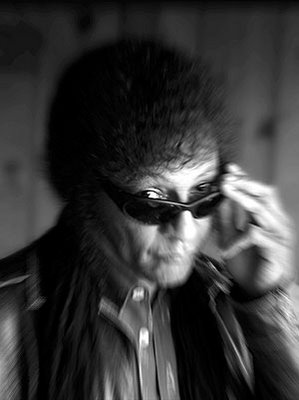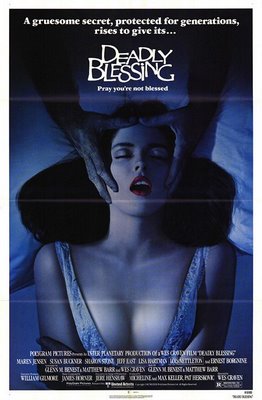
Apologies to Joe Strummer, it's true. Working on the last stages of the Bava book has been mentally exhausting, and when I have felt up to writing something new, creative writing being the only reliable road back to my real self, I've been trying to stockpile reviews for the return of VW in October. Right now, I'm not feeling up to meeting the obligations of this blog, whatever they are, but I feel the need to keep my foot in the door -- if only to keep you somewhat engaged and entertained during this, my period of ambivalence.
It's not entirely due to this blown fuse in my brain; as my subject line suggests, there is also an element of disenchantment involved. When I started this blog last October, I quickly became familiar with the blogs that were happening at that time. It hasn't been a full year quite yet, but a number of the blogs I bookmarked at that time have since disappeared or become stuck in their own inability to progress. I made the decision a few months ago to delete any blog from my Favorite Places that didn't update itself in a two-week period; before jettisoning an old blog, though, I would explore their list of links and bookmark one or two that were to my liking. It occurred to me that I was like a polar bear, struggling to stay afloat on blogdom by stepping off one shrinking ice floe onto another.
There is also this Blog-A-Thon phenomenon, a means of unifying like-spirited blogs into a virtual magazine on a given theme for a day. Today is the 101st anniversary of Friz Freleng's birth and a
Blog-A-Thon has been called. I think it's a good idea; Friz, the subtlest of the great Warners animators, is a worthy subject. Part of me has something to say about him and wants to participate, but the greater part of me doesn't, especially now, because I'm feeling overworked and come here to get away from assignments and deadlines.
I posted here some weeks ago about my excitement at discovering music blogs. Since then, most of the best music blogs have succumbed to some RapidShare-related problem, with alledged trouble-makers arranging to have music files blocked or taken down. Some outstanding music blogs are still active, like
7 Black Notes, but there was one week not so long ago when they were dropping like flies. Very sad, and a potent reminder to me of how ephemeral all this internet business really is. Online publication reminds me of Keats' epitaph about lines "writ on water."
It's hard for me to imagine that all this blogging is going to endure or amount to anything important, and I also worry about what all this virtual communication is doing to the world of book publishing -- where the real history of our life and times should be written. I've called blogs the fanzines of today, and there is certainly a place for these in our culture, but can we lay claim to a culture if fanzines become our major source of information, or just a pop culture? When Donna and I started publishing VIDEO WATCHDOG in 1990, there was a period of identity crisis at first because the miracle of desktop publishing had the sudden ability to make fanzines look pretty slick. VW was called a "semi-prozine" for awhile, even after it became our full-time job and sole means of support. Now I'm seeing a reversal of that confusion, with numerous professional writers, and the magazines and newspapers employing them, publishing their work on the internet to avail themselves of its instantaneous and potentially boundless audience. I've been writing a monthly column for SIGHT & SOUND for the past few years, which made its online debut last month. Though having "No Zone" online makes it easier for me to share tear sheets with DVD companies, I have mixed feelings about its free availability. It was a more meaningful and satisfying achievement for me as a print exclusive.
Over the weekend, I got into a little online joust with Paula Guran on her
DarkEcho blogsite, which I certainly didn't intend. She was insisting that there was no difference in quality between print and internet writing, and invited responses. I responded that there were a great many reasons why print writing was inherently superior to internet writing -- not only the qualitative differences between professional and amateur sources of information, but others owing to the essence of the internet medium and the way readers interact with it. I sincerely believe that while people read books and magazines, they surf the internet. I'm no different; when I read material online, I find that I do so with greater impatience, which leads me to skim, rather than read, other people's online writing. I have a lot of bookmarked sites to visit, after all, and if one doesn't grab me, I'm off to the next; it's akin to channel surfing. But when I feel like reading print, I grab the one book or magazine I want to read; I don't grab an armful and then flip through them until I find something that holds my flighty attention, which I then drop after a minute or two's perusal. I don't remember what I read online; I don't quote articles to my friends, I send them links.
Anyway, I posted my feelings on the subject, which I proceeded to regret, because somehow -- owing to another of the major inequalities between print and net -- there was, in Strother Martin's immortal words, "failure to communicate." I could not get Paula to see that I wasn't belittling her work or her arena personally with my stated beliefs, and I couldn't tell when her responses to me were being sincere or sarcastic. After some public ping-pong, she guided our exchange to private e-mail, where we still didn't solve anything and probably only served to make a happy acquaintence worse. I don't know Paula personally, but she's been a friend to me and my work over the years; I like her and respect her devotion to horror-related fiction and non-fiction, and hate to think that she might now regard me as some kind of high-horse snob because I proposed some considerations she didn't want to hear, and because of the noise-to-sense ratio inherent in internet communications. And perhaps, even probably, I got some garbled signals from her too. So that was
another discouragement.
Online, an ordinary exchange of ideas -- the root of the symposium, upon which principle of open and equal discussion the concepts of democracy and civilization were based -- can escalate all too suddenly into battle lines drawn in imaginary sand. We absorb what we read online before we can properly digest it, which means that we absorb it in a coating of our own biases and preconceptions. Nowadays, no one has the time or patience to want to adequately explore or entertain new or different or opposing points of view. The internet has seen to that, with additional indoctrination from the folks at Fox News.
This is my 257th blog posting in less than a year and, as you know, my postings can go for 18 or more paragraphs some days. (Hell, look at today's -- I can do 13 paragraphs even when I have
nothing to say!) I've amassed enough material here to fill a book, even if I was selective about what I included; I think most of it would be worthy of preserving between covers, given a tweak here and there. I'm proud of this accomplishment, but it's also an accomplishment that suggests thoughts to me of what else I might have accomplished, had I not been so faithful to this task. Like finishing my current novel-in-progress, something I used to wrestle with, which I have lately been watching wrestle with itself. And that's just not right.
Last week, Gary Svehla of MIDNIGHT MARQUEE (who was presented over the weekend with his
Monster Kid Hall of Fame Rondo Award -- congratulations, Gary!) wrote me to say that he reads this blog much more religiously than he ever read VIDEO WATCHDOG. (Ouch! Thanks!) "Your blog reminds me of what fanzines used to be in the 1960s and 1970s," he wrote. I know that Gary meant well, and I do take his words as a sincere compliment, but I published my first fanzine, back in the '70s, when I was 14. I work very hard at this task, and Gary's words (along with my aforementioned exchange with Paula) helped me to see that, no matter how much time I lavish on this blog, it's unlikely to amount to anything more than what it is. The question is,
Can I be content with that? And the answer, I feel, is that I am going to be very unhappy with myself, now or later, if I don't apply my energies, while I have them, to something more personally fulfilling and, perhaps, rewarding.
Don't misunderstand; I'm not preambling an end to this blog. Knowing me, as I try to do, I could be back here again tomorrow, suddenly re-energized and re-engaged. I'm just saying that, for the past week and today also, I've been feeling a bit burnt-out (you'll understand better when you see all the detail work that's gone into the book) and need to find something that might recharge my batteries. Everything I see online right now seems to be draining them, hemorrhaging me of time and energy and determination. I know in my heart-of-hearts that
Video WatchBlog serves an important purpose, especially during this period when VIDEO WATCHDOG is being temporarily published at half-ration frequency, which is why I'm not yet prepared to retire it.
If you've followed my writing, or my online presence, for any period of time, you know that I go through phases -- phases when I feel the need to stop posting on film boards, when I yearn to get offline altogether, when I miss the camaraderie and come back, when I love movies, when I hate movies. My relationship with the internet has always been like a bad marriage: argumentative, unhappy, but nevertheless committed, always threatening but never quite carrying through with divorce. If I can't give you material, I can at least give you my honesty. At the moment, I'm neither hating or loving this blog -- it might be easier for me to love it if there were more hours in the day -- but, for the moment anyway, I'm not feeling the need to be here. Still, I'm a faithful husband. As Beckett wrote,
I can't go on. I'll go on.So, until tomorrow...
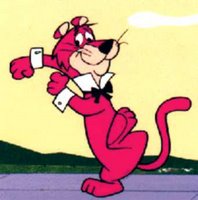 Over at Cartoon Brew, Jerry Beck has announced the passing of animation legend Ed Benedict at the age of 94.
Over at Cartoon Brew, Jerry Beck has announced the passing of animation legend Ed Benedict at the age of 94.


